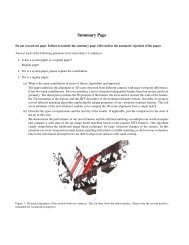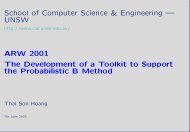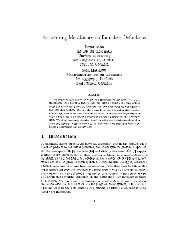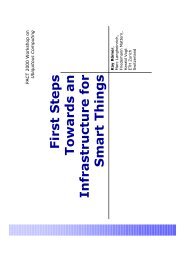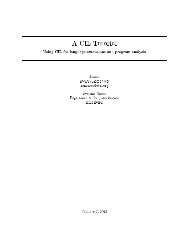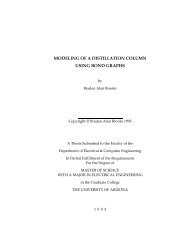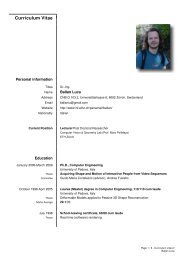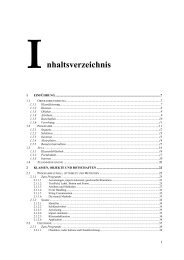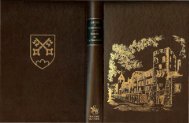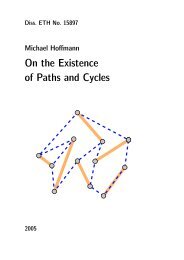Fast Robust Large-scale Mapping from Video and Internet Photo ...
Fast Robust Large-scale Mapping from Video and Internet Photo ...
Fast Robust Large-scale Mapping from Video and Internet Photo ...
Create successful ePaper yourself
Turn your PDF publications into a flip-book with our unique Google optimized e-Paper software.
Algorithm 2 The ARRSAC algorithm<br />
Partition the data into k equal size r<strong>and</strong>om partitions<br />
for all k partitions do<br />
if #hypothesis less than required then<br />
Non-uniform sampling for hypothesis generation<br />
end if<br />
Hypothesis evaluation using Sequential Probability Ratio Test (SPRT) [66]<br />
Perform local optimization to generate additional hypotheses<br />
Use surviving hypotheses to provide an estimate of the inlier ratio<br />
Use inlier ratio estimate to determine number of hypotheses needed<br />
for all hypotheses do<br />
if<br />
SPRT(hypothesis) is valid then<br />
Update inlier ratio estimate based on the current best hypothesis<br />
end if<br />
end for<br />
end for<br />
4.1.3. Camera Pose Estimation through Fusion<br />
In some instances we may have not only images or video data but also<br />
geo-location or orientation information. This additional information can be<br />
derived <strong>from</strong> global positioning system (GPS) sensors as well as inertial navigation<br />
systems containing accelerometers <strong>and</strong> gyroscopes. We can combine<br />
data <strong>from</strong> these other sensors with image correspondences to get a more<br />
accurate pose (rotation <strong>and</strong> translation) than we might get with vision or<br />
geo-location/orientation alone.<br />
In order to fuse image correspondences with other types of sensor mea-<br />
16



